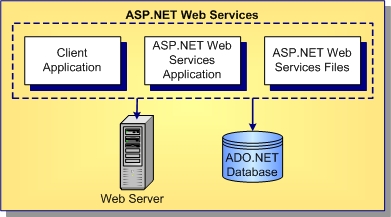|
RAD Studio for Microsoft .NET
|
|
RAD Studio for Microsoft .NET
|
Web Services is an Internet-based integration methodology that enables applications, independent of any platform or language, to connect and exchange information. Web Services is tightly integrated with the ASP.NET model used for the .NET Framework. Unlike traditional native Windows applications, ASP.NET Web Services applications contain objects and methods that are exposed over the Web using simple messaging protocol stacks. Any client can invoke a Web Services application over HTTP using a WebMethod. Like any method that can be accessed by way of a simple Windows Form application, a WebMethod provides some defined functionality. Unlike other types of methods, however, the WebMethod is accessed by way of a web browser. For more general information about Web Services, refer to the Microsoft .NET Framework SDK Documentation.
CodeGear provides tools to develop and access ASP.NET Web Services using a variety of techniques. As modular objects, web services can be reused without additional coding.
The following topics provide a brief introduction to the architecture of ASP.NET Web Services, the basic fundamentals of Web Services communication, and to the files created when you develop ASP.NET Web Services.
This topic introduces:

The major components of the ASP.NET Web Services architecture include a client application, an ASP.NET Web Services application, several files such as code files in the development language, .asmx files, and compiled .dll files. You need a web server to house both ASP.NET Web Services application and the client. Optionally, you might include a database server for storage and access of ASP.NET Web Services data.
Before you begin developing a Web Services application, become familiar with the following concepts:
Current web services provide simple information sources that you can easily incorporate into applications, such as stock quotes, weather forecasts, and sports scores. As the demand for access to business logic over the web increases, companies are finding ways of providing their customers with a class of applications to analyze and aggregate information. For example, a financial institution might provide a web service to consolidate and continuously update customer financial information, such as stock portfolio, 401(k), bank account, and loan information for display in a spreadsheet, web site, or a personal digital assistant (PDA). This saves customer from having to manually collect and combine the information on their own. Although much of this information is available through the web today, a web service will simplify accessing and consolidating information and will ensure greater reliability.
You can use web services for solutions in the following areas:
Certain files are automatically generated when you create applications with ASP.NET Web Services. These files enable the ASP.NET Web Services to render their services through a web server. The following table lists the files and their descriptions.
|
File |
Description |
|
.asmx |
When you create an ASP.NET Web Services application, a text file is automatically generated with the .asmx extension. The required Web Services directive is placed at the top of this file to correlate between the URL address of the web service and its implementation. Within the .asmx file, you add Web Services logic to the methods visible by the client application. The .asmx file acts as the base URL for clients calling the XML web service. This file is compiled into an assembly, along with other files, for deployment. |
|
code-behind |
When you create an ASP.NET Web Service application, a code-behind file is generated with a language-specific extension. You add your Web Services logic to the public method to process Web Services requests and responses. |
|
compiled DLL files |
Web Services DLL files provide dynamic services on the web server. |
|
.wsdl |
This file is generated when you click the Add Web Reference feature to add the web service to your client application. It describes the Web Services interface available to the client. |
|
.map |
This file enables the discovery of a web service that is exposed on a given server. It also contains links to other resources that describe the web service. |
|
Copyright(C) 2008 CodeGear(TM). All Rights Reserved.
|
|
What do you think about this topic? Send feedback!
|